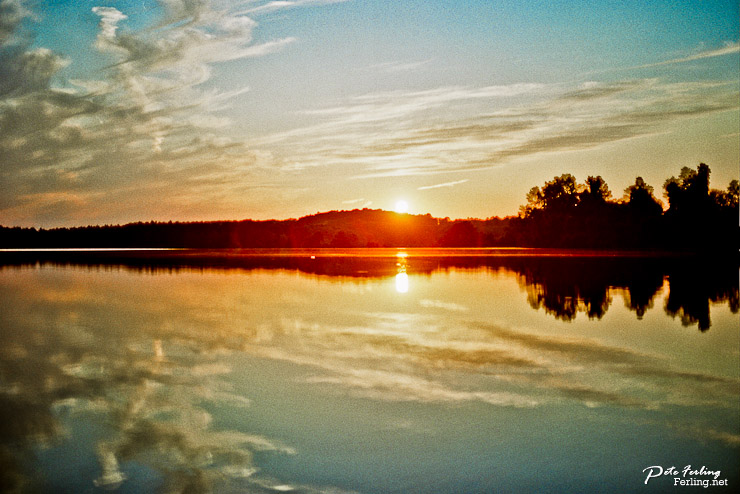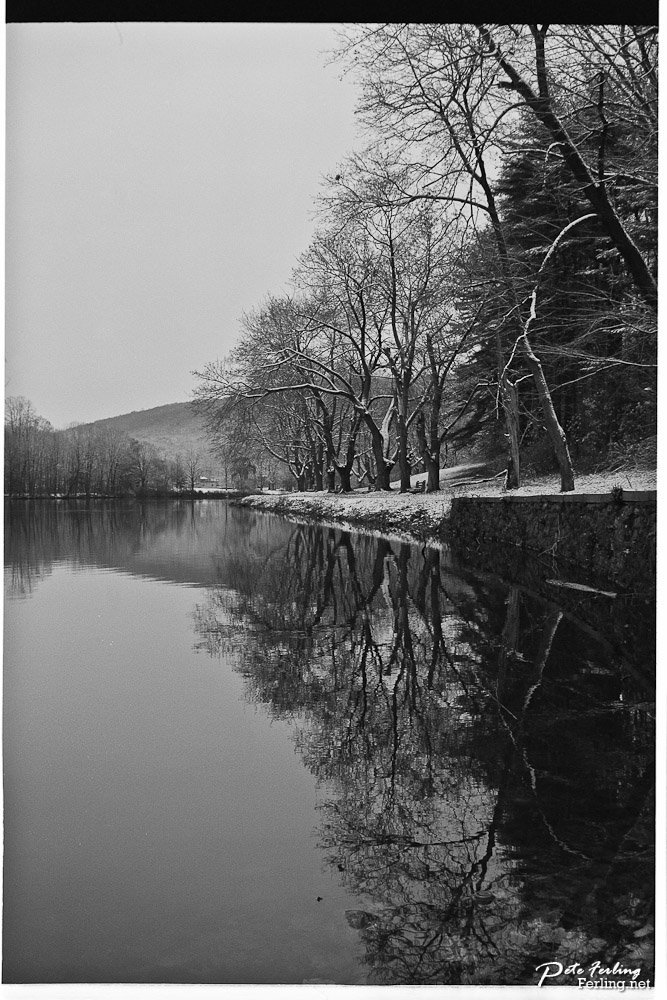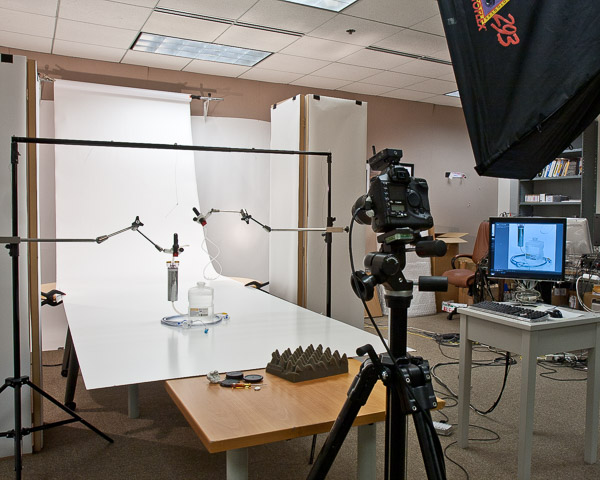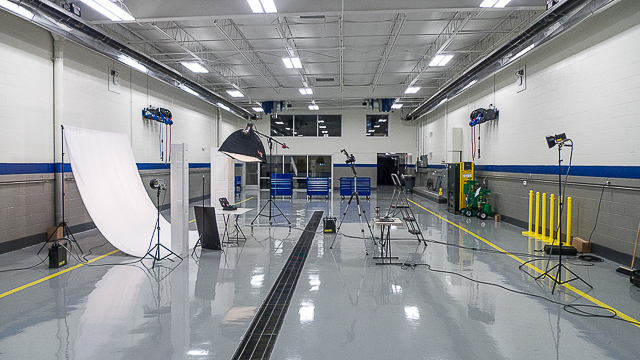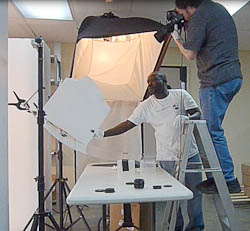
Pages |
Home |
| Film: Embrace it. Romance it. At least appreciate it, for one day we will lose it. Updated: 4/12/21 |
|
My first encounter with digital was in 2000 with a simple point and shoot Nikon Cool pix 800. It was incredibly slow and at 2 megapixels, certainly not a film killer. However, it was novel in that you could see and share your images instantly. Plus it was easy enough for the wife and kids to use. What inspired me most about that camera, (when you consider film and darkrooms), is that it was like having a photo lab in your hands. No more weekly runs to the film drop box at Kmart or Rite-Aid. Those of you much younger who never had to deal with film might remember when your parents had to wait for days, or spend a few more bucks at the one hour photo store. It all adds up quickly. My first professional encounter with digital was In 2003 when I got a hold of a Canon 1Ds Mk1, an 11MP full frame 35mm digital camera for studio work. It was Canon's first foray into pro digital market. Upon first use, I knew that film's days were numbered. I quickly replaced the old Cool pix with a Canon G5, another point and shoot, but with manual controls, a fast f2.0 lens, and 5 megapixels. It prints an impressive 8x10 that rivaled many 35mm consumer films. I still have it, and use it on occasion. In fact I have used it at a live concert to prove a point. In 2007 I replace the 1Ds with a Canon 40d for studio work, a crop sensor marvel that easily hits the kinds of content needed for brochures and sell sheets. While I continued to use medium format film personally, I purchased another 40d for myself and shelved the 35mm film gear for all but occasional use. Today I use a Canon 5D mk II, 7D, and a Panasonic LX3 (love that 24mm Leica lens), and I have my sites set on something in the Medium Format Digital range.
|
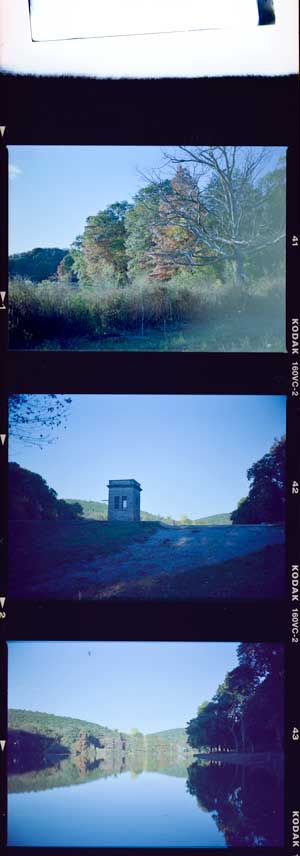 |
I still use film, especially medium format, because I like the look and dynamic range it offers over digital for certain landscapes and artistic use. Just like many of you whom might prefer holding a real book instead of an E-reader, or restoring old cars, or listen to vinyl records. It's a pleasure to work with.
Yes, it cost more in both time and money, can be a hassle to handle and is at times, very unforgiving. On shoots you have to slow down and think, trust your settings and instincts. You have to wait until the negatives are processed to see if all those efforts paid off. Even so, by today's standards, especially consumer 35mm, it's grainy, a little soft and so many things can go wrong to affect the final outcome. But when it works. It has a look to it that many of us can warm up to.
Much of this has to do with our upbringing. As kids we thumbed through the National Geographic, Time and Life magazines. We didn't care about grainy images to tell a story. In fact, I never considered these issues until I started comparing my film shots with digitals. I like digitals. They are clean and easy to work with. In photoshoots I can tether my camera to a laptop and instantly review the shots with the clients present, or on-line via desktop sharing software making adjustments on the fly. When all said and done, everyone knows we got the shot. No more trusting a polaroid, and waiting for the negatives to come back. Despite this, film still has a popular draw. There's all those requests in forums today asking how to make digital look "filmic". Which plugin do I buy? I have only one answer: Shoot film, (or use a manual film lens - which is half of the equation). Depth of field has a lot to with it as well, and small or crop sensor cameras won't do.
Even if Kodak goes under, and I hope not (we don't need anymore jobless in this country). Certainly some vendors will continue to make it for die hards and late adopters. However, the kinds of access that you and I easily enjoyed will soon dry up. Local vendors will sell off their processing gear. I will have to seriously consider building my own darkroom (or start using a sink kit), and find a source that sells the chemicals. Even so, it will become a pricey hobby (or maybe a lucrative niche). Doing the math, even a used PhaseOne digital will look like a deal. That will be some bridge to cross... If you have a few rolls of shot film in the fridge, or rolling around in that drawer. Now might be a good time to get that processed. What did digital improve or fix anyways? In my opinion, I fondly remember that film was more of a craft than a conveniece. In terms of art, it required more than an education that was also expensive in terms of time, gear and experience. Because you had to get it right the first time. There were no previews on the set, so you took extra shots, lots of extra shots. Then a rush to the lab or dark room to make sure it did work. It was difinetly a lot of work. Obviously, digital was quickly embraced in those regards but did not "fix" or improve much else. What hasn't changed is knowledge of lighting, gear and learning how to setup and pose shots. I still wound up dragging a van full of gear to shoots anyways because a digital camera, with it's fixed sensor, limited you to a set margin of capability, (you couldn't swap out a sensor like it was filmstock). This actually increased the amount of post work via photoshop and on the set to get the right shot. Especially with early digital cameras costing thousands of dollars. Funny that, really. In film, you lived with the shot that worked: Focused and well lit. In digital? You wound up over-working the shot in post, not to just to correct it, but because you could do more. Even then, and quite laughable, everyone was trying to make their digitals look like film in post! The margin that digital afforded over film was erased by the very people whom touted it. Digital made it cheaper and easier for others to enter the market, and cell phones eventually impacted the bottom line of many professionals. Not so much in capability, but in the romance of having pictures taken. Now we have AI to contend with. Even in those apps are settings to make images look filmic. Everyone at the wedding becomes the photographer. So I don't bother with weddings and family events. I still shoot the kinds of things that requires a van full of gear and multiple lights for products, etc. There is little need to convince someone about the fees when they see all the work that gets involved:
The real cost: Years ago, to process a role of film was about $3 at Kmart and a 2 day wait, or $12 in the one-hour lab. A Medium format 120mm roll was about $7 and a days wait. My first 35mm pro camera was about $6000. That was a lot of film when a typical 35mm film camera cost about $500. Mind you, lenses were and are still expensive. However, the OEM's switched to new lenses and lens mounts when they brought out digital SLRs. So there was a huge cost in the move. The early digitals made out poorly for large prints and involved post processing in software, the new "digital lab". Of course, one needed a decent, fast PC to handle the work. Photography Today Fast forward to the present and the arguements for film vs. digital are way past. Sometimes I wonder what that was all about anyways? I miss the days being in room full of gear, surrounded by marketers and sales reps, working on their product shoots and getting the looks they needed for their ads, brochures and sell sheets. Having digital certainly helped in that regards. When Arrow was bought out and our deparment was closed? I remember that many of them were upset, no longer having access to that kind of creativity. When I worked for Penske, I had my own gear and would bring that in on occasion to photography their rigs and tools. However, it was never the same. I found myself working alone.
In present times the Covid issue has isolated a lot of people and remote work (being alone), has become the norm. I finally sold off the last of my film gear and the old Balcar Flash packs went to the recyclers. I never really considered myself a professional, just lucky to have the work. However, I find myself being in a small minority of folks with a skillset that may no longer be in demand, (here I am thinking that I earned my right to be a pro and now the demand for one has gone). An uncertain Future It's been quite the journey, growing up as a farm boy, military vet, product engineer and multimedia producer. Today, I'm staring down at a cheap camera drone that I purchased on ebay. In it's first flight I nearly lost it and had to learn some new skills in making adustments. There is demand for this kind of media and good drones are pricey and require both training and a license. More importantly is finding the right job with the right people and in a good company. What does this have to with photography? Well, the kinds of photography I like to do isn't cheap and feeling useful in ones job is kinda important. Otherwise, it's still an expensive hobby. To be able to enjoy the work while paying the bills is the challenge I have to consider. Many jobs are now done on automated systems and virtually no creativity involved. Years ago, I setup such a job in a large tool factory. I had four teams, two shooting digital, one post processing and another running parts and setting up. The image below was one of the setups. The crew hired by the vendor were members of the lost boys from Africa. Which made for some interesting discussions.
I developed a special rig to expedite the process, you can read up on it here: Light Sculpting Table. In one week we shot about 10,000 parts, their entire inventory for a cataloge. That made for a long, tiring week. I'm an artist. That was not art, but it was fun to play engineer and solve their problem. I still have two old cameras in a bag. An old 7d and a 5d. Maybe one day I'll put them back into use. -Pete
|
|





